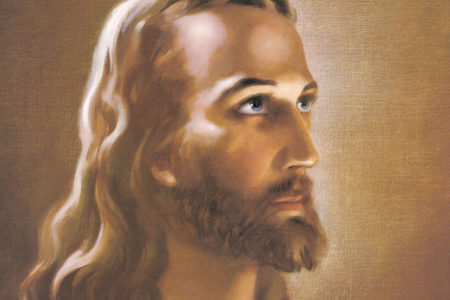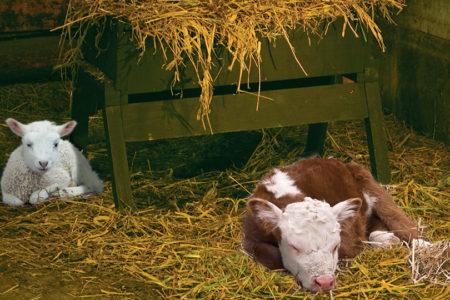No Room at the Kataluma
A good story requires tension. Tension keeps readers sitting on the edge of their seats until the resolution, which generally comes near the conclusion of the story. Often the source of tension is the bad guy, the villain.
When it comes to the account of Jesus’ birth, it seems like the villain was the poor innkeeper. After all, he was the one who turned Mary and Joseph away “because there was no room for them in the inn” (Lk. 2:7). Right?
Perhaps not. Although many people picture a motel with a large, neon “no vacancy” sign out front, that is not the biblical concept of an inn.
The Greek word translated “inn” is kataluma. Traditionally, there are two possible interpretations. The first is that the word refers to an “Oriental caravansary or kahn,”1 according to Dr. G. Coleman Luck, late chairman of the Bible Department at Moody Bible Institute.
He suggested the following:
The caravansary is a large square edifice built around an open inner courtyard. In the center of the courtyard a well is provided. Often the building is two stories, with the lower one containing stalls for beasts and the upper consisting of small rooms for use of the human travelers….The inn where there was no room for Joseph and Mary (Lk. 2:7) has traditionally been thought of as a caravansary.2
Dr. Luck said some people believe such shelters “still exist in rural areas of Asia.”3
However, the word also could mean something entirely different:
Some authorities, however, hold that the Gk [Greek] word here used…refers not to a caravansary at all but to a guest chamber or lodging place in a private home….According to this view Joseph and Mary planned to stay at the home of friends or relatives, but the small dwelling and its guest chamber were so full that they had to be housed in the lower portion where the animals were quartered.4
By the time the magi arrived at “the house” where Jesus was living (Mt. 2:11), the family would already have been moved upstairs.
Tradition suggests Jesus was born in a cave, or grotto, that also served as a stable. Clearly, Mary and Joseph were housed with animals: “So it was, that while they were there, the days were completed for her to be delivered. And she brought forth her firstborn Son, and wrapped Him in swaddling cloths, and laid Him in a manger” (Lk. 2:6–7). A manger is a feeding trough.
Today in Bethlehem, there is a grotto under the Church of the Nativity, which traditionally is considered Christ’s birthplace. However, no one can say for sure where Jesus was born.
And no one can say for sure when He was born, even though we celebrate the Savior’s birth in December.
In the end, whoever moved Mary and Joseph to the stable probably did them a favor because it provided privacy for their Son’s birth. So if there was a kataluma keeper, he wasn’t such a bad guy after all.
ENDNOTES
- Dr. G. Coleman Luck, Wycliffe Bible Encyclopedia, Charles F. Pfeiffer, Howard Vos, and John Rea, eds., paperback ed. (Chicago, IL: Moody, 1983), 845, s.v. “inn.”
- Ibid.
- Ibid.
- Ibid.









Catholic Biblical Quarterly 1 61 1999 has an excellent article by Brooke W R Pearson titled The Lucan Censuses, Revisited which addresses these issues thoroughly from a conservative point of view.
None of this applies unless you believe that (a) there was a census that applied to people who lived in Galilee; (b) it was ordered by Quirinius in the days of Herod the Great; (c) the Romans wanted to tax people in the towns where their ancestors had once lived; (d) Joseph would have taken his heavily pregnant wife (whose presence to register in a census would not have been necessary) on an 80-mile cross-country journey that might have taken a week.
Matthew, on the other hand, seems to imply that the Holy Family was living in Bethlehem at the time – in which case the no-room-at-the-inn story is total unnecessary fiction, to get them in to Bethlehem on some phony pretense (But then, Luke has them returning “home” to Nazareth at the earliest opportunity).
It should be borne in mind that Luke was one of the most consummate historians to have committed history to writing. His account is proven accurate by reference to external sources. His account is in far more detail that Matthew, and I do not get from Matthew that the Holy Family was living in Bethlehem at the time.
Moreover, the original word “kataluma” (guest room) used by Luke is different from the word “pandokheion” (caravanserai) used elsewhere by Luke to describe the lodgings used by commercial travelers of the day.
If you take all of the synoptic gospels together, you get that Bethlehem was crowded due to the census. I take it that Mary and Joseph would have likely sought accommodation with relatives. But even if they did not, the normal practice for strangers would be to meet with the warden or wardens of the town or city and they would be familiar with a place where the couple (or family) could be billeted in the guest room. There were no “inns” in the modern sense in Bethlehem at that time.
Whatever the details were of the birth of our Lord and savior, it was clearly in very ordinary -even “lowly” – circumstances that he was born, yet He is recognized by we Christians to be our God and Savior not just of the Jews, but all mankind.